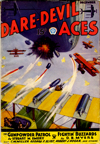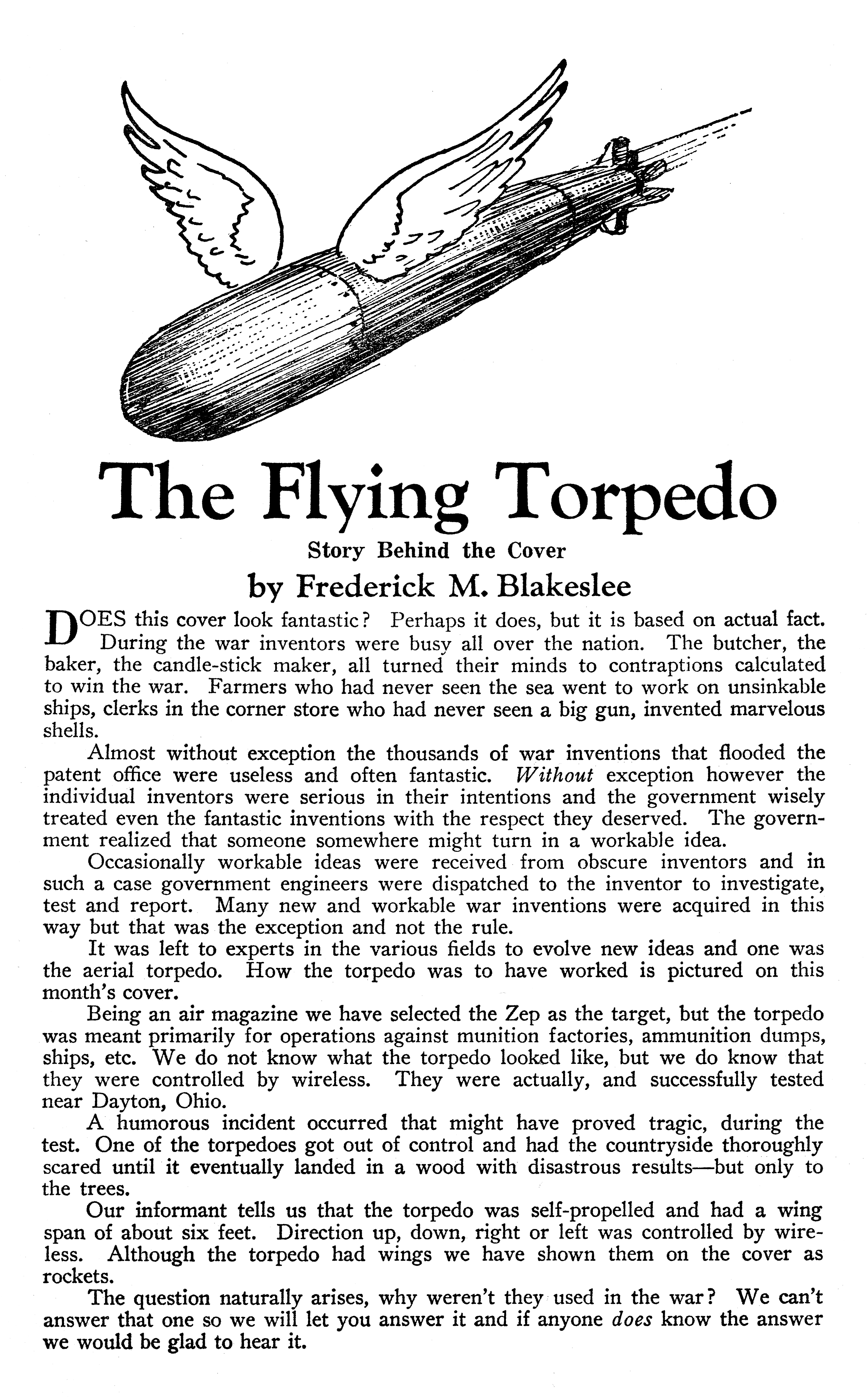“The Flying Torpedo” by Frederick Blakeslee
Frederick Blakeslee painted all the covers for the entire run of Dare-Devil Aces. And each of those covers had a story behind it. Blakeslee had three different formats for his stories behind his covers. First, there’s the straight story of the cover action; second, there was the ship on the cover where he told the specifics of the plane featured on said cover; and then there were future visions of air warfare. This week we have the first of these where he talks about the flying torpedo—or guided missle! From the December 1934 issue of Dare-Devil Aces—
 DOES this cover look fantastic? Perhaps it does, but it is based on actual fact.
DOES this cover look fantastic? Perhaps it does, but it is based on actual fact.
During the war inventors were busy all over the nation. The butcher, the baker, the candle-stick maker, all turned their minds to contraptions calculated to win the war. Farmers who had never seen the sea went to work on unsinkable ships, clerks in the corner store who had never seen a big gun, invented marvelous shells.
Almost without exception the thousands of war inventions that flooded the patent office were useless and often fantastic. Without exception however the individual inventors were serious in their intentions and the government wisely treated even the fantastic inventions with the respect they deserved. The government realized that someone somewhere might turn in a workable idea.
Occasionally workable ideas were received from obscure inventors and in such a case government engineers were dispatched to the inventor to investigate, test and report. Many new and workable war inventions were acquired in this way but that was the exception and not the rule.
It was left to experts in the various fields to evolve new ideas and one was the aerial torpedo. How the torpedo was to have worked is pictured on this month’s cover.
Being an air magazine we have selected the Zep as the target, but the torpedo was meant primarily for operations against munition factories, ammunition dumps, ships, etc. We do not know what the torpedo looked like, but we do know that they were controlled by wireless. They were actually, and successfully tested near Dayton, Ohio.
A humorous incident occurred that might have proved tragic, during the test. One of the torpedoes got out of control and had the countryside thoroughly scared until it eventually landed in a wood with disastrous results—but only to the trees.
Our informant tells us that the torpedo was self-propelled and had a wing span of about six feet. Direction up, down, right or left was controlled by wireless. Although the torpedo had wings we have shown them on the cover as rockets.
The question naturally arises, why weren’t they used in the war ? We can’t answer that one so we will let you answer it and if anyone does know the answer we would be glad to hear it.

“The Flying Torpedo: The Story Behind The Cover” by Frederick Blakeslee
(December 1934, Dare-Devil Aces)
Next time, Mr. Blakeslee brings us another fanciful invention—”Death Lightning” for the January 1935 cover. Be sure not to miss it.




